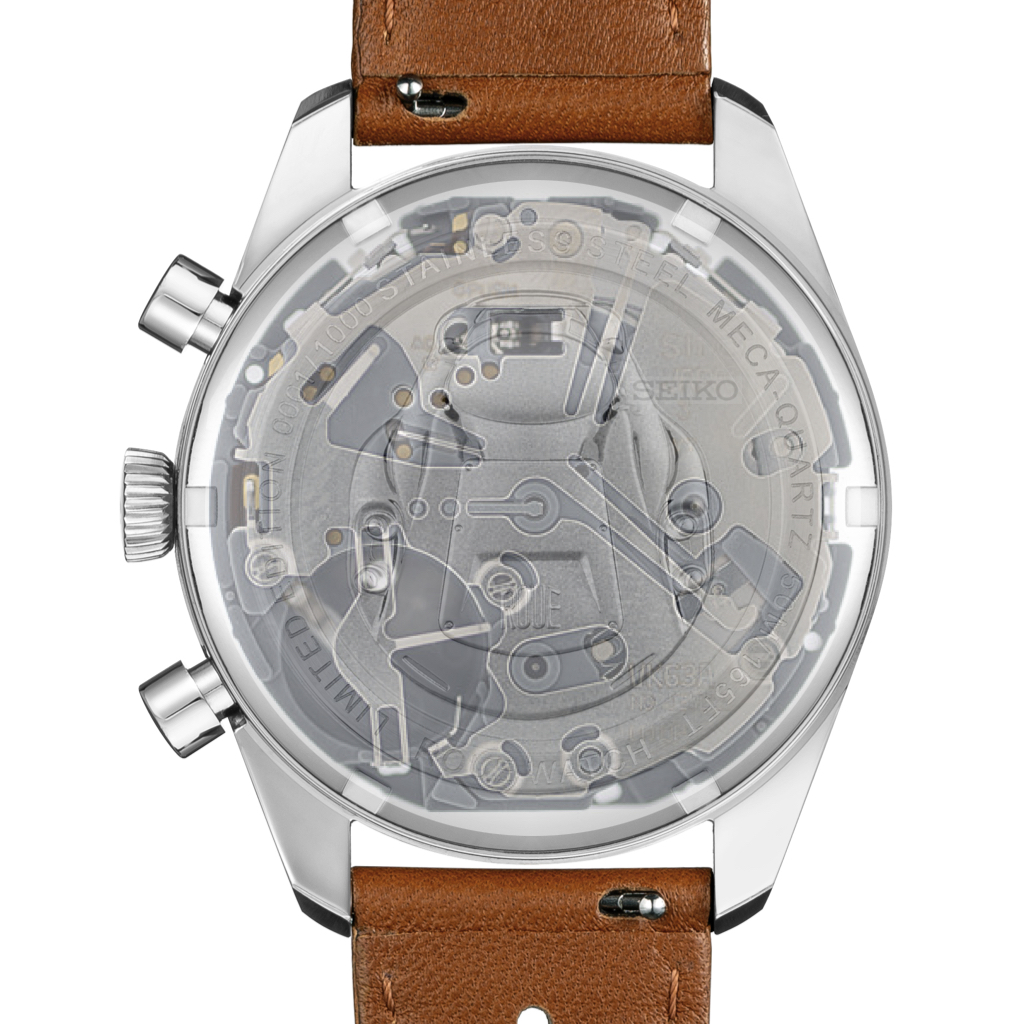Also called Hybrid, the movement inside our TPS model is a complex blend of two very different era technologies: the so reliable, accurate, and affordable battery quartz and the expensive but charming mechanic movement. It is basically a quartz crystal-based movement that keeps track of the standard timekeeping. On top of that is mounted the mechanical components necessary for a chronograph to function. The end result is a chronograph that works precisely as a mechanical would. This means snapping back to zero upon the reset and sweeping smoothly rather than ticking—all without the hassle of winding and dealing with power reserve.
The Meca-Quartz was actually created by Seiko in 1982 when the first Caliber 7A28 watch was introduced. It was the first analog display watch with a quartz chronograph movement that was ever made. The British RAF was the pioneer to order a 7A28 from Seiko for their pilots, which was then extended for other military use during the 1980s and 1990s.
In 1987, struggling at the height of the quartz crisis, Jaeger-LeCoultre launched the Caliber 630. It had two motors: one for the hands and one for the mechanical chronograph. Like Seiko and others today, it was essential for keeping the mechanical chronograph “dry” click feel while having all the qualities of a quartz battery. Jaeger’s movement was initially well recognized and later used by IWC for their 1988 Meca-Quartz Pilot’s Watch. Other brands as Cartier, Porsche Design, and Chopard followed using the Meca-Quartz technology. Their point of failure was the fact that they limited this technology to the luxury versions and didn’t alter their pricing scheme in any way. This kept it unattainable for most people as their standard mechanicals.

